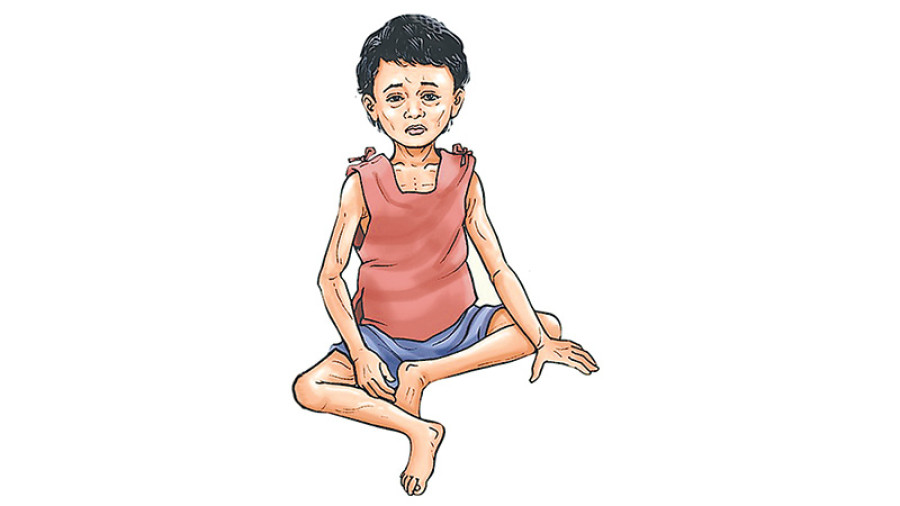National
Micronutrients deficiency high: Report
Nearly 21 percent of the country’s children below the age of five suffer from zinc deficiency, a latest report has revealed.
Nayak Paudel
Nearly 21 percent of the country’s children below the age of five suffer from zinc deficiency, a latest report has revealed.
The Nepal National Micronutrient Status Survey (NNMSS) report released on Wednesday highlights a disturbing trend in the early growth of children between 6 and 59 months, with high chances of possible stunting and vulnerability to diseases such as diarrhoea, nausea, and vomiting.
Stunting is a physical condition in which children’s growth and development with age are affected, which health experts say can be mitigated with breastfeeding and regular intake of essential nutrients.
According to Dr Santosh Manandhar, a paediatrician at the Kanti Children’s Hospital, breastfeeding up to a particular age is a must for children’s overall growth.
“A child experiences a deficiency of micronutrients such as zinc if they are not fed proper nutritional diets such as mother’s milk,” Manandhar told the Post. “The chances of stunting, hypogonadism [reduction or absence of hormone secretion] and poor immunity in a child are high due to such deficiency.”
Besides children, a large number of women, including expecting mothers, also suffer from zinc deficiency. According to the report, about 24 percent of non-pregnant women in the age group 15-49 years suffer zinc deficiency.
Health experts directly relate the deficiency of micronutrients to unhealthy diet and lifestyle but the figures surprisingly also point that those with access to, and the means for, a healthy lifestyle also face micronutrient deficiency.
The NNMSS report revealed that the geographical regions and access to nutrient-rich foods have not helped minimise the deficiency among the people as they are not utilising available resources to lead a healthy life.
In the 6-59 months age group, 28 percent children living in the mountains, 23 percent in the hills, and 18 percent in the Tarai have zinc deficiency.
“Nepalis have easy access to food items rich in micronutrients because of our diverse and rich agricultural produce in all the geographic regions. Yet, people fail to eat regularly these quality foods due to the lack of awareness of the food and ways to prevent malnutrition,” Dr RP Bichha, director of the Family Health Division, told the Post.
The report also reveals that Helicobacter pylori (H pylori) is prevalent in children and women— 20 percent of children (6 to 59 months) and 40 percent of non-pregnant women (15 to 49 years) have H pylori infection, which can cause ulcer or even stomach cancer.
The report also shows the prevalence of anaemia and iron deficiency among the children (6-59 months)—19 percent had anemia, 28 percent had iron deficiency and 11 percent suffer from iron deficiency anemia, a condition in which blood lacks enough healthy red blood cells. Among women in the age group 15-49 years, anaemia was high in expectant mothers (27 percent) compared to those who are non-pregnant (20 percent).
The government has committed to using the report as reference for implementing various nutrition plans across the country.
State Minister for Health and Population Surendra Kumar Yadav said, “The health of children and women should not be ignored at any cost. The NNMSS report will be of great help in making further plans and policies.”
Since the deficiency of micronutrients is also directly linked to drinking water, sanitation, and quality food, health experts urge the authorities concerned to focus on these areas.
“Minimising the deficiency of micronutrients is only possible with multi-sectoral approach. The government should have a holistic approach to dealing with problems in corresponding sectors like sanitation, water, and livestock,” said Dr Sushil Nath Pyakurel, chief specialist at the Ministry of Health and Population.




 10.12°C Kathmandu
10.12°C Kathmandu















